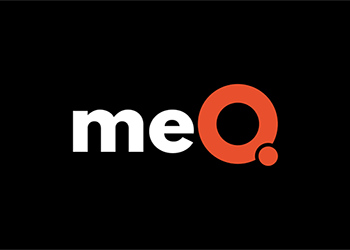How to Reconnect Your People When They’ve Mentally Checked Out
Employee disconnect is the new workplace reality, and it may be affecting the majority of your team.
Employee disconnect is the new workplace reality, and it may be affecting the majority of your team.
Picture this. Your star performer shows up every day, completes their tasks, participates in meetings—but something’s changed. They’re physically present… but emotionally absent. They’re not complaining, or talking about leaving, but their productivity just isn’t where it used to be.
Welcome to the new workplace reality of employee disconnect. According to meQ’s Summer 2025 State of the Workforce report, it may be affecting the majority of your team.
Our comprehensive study of more than 5,400 employees reveals a sobering truth. 55% of the workforce shows at least one symptom of disconnect, lately being termed “quiet cracking.” This isn’t simple job dissatisfaction or Monday morning blues, but a significant misalignment between employees and their workplace. It shows up when these factors are present:
Among disconnected employees, roughly one-third show a single symptom, while 18% exhibit two indicators. Most alarming are the 6% who display all three signs—representing the most severely disconnected segment who have essentially checked out.
Disconnect directly undermines performance in ways that keep the C-Suite up at night, and the productivity impact intensifies as disconnect deepens. While employees with no signs of disconnect report an average productivity impairment of 29%, those suffering from severe disconnect report 66% impairment—effectively doubling productivity loss and creating substantial capacity drain.
Disconnect is pervasive. Remote, hybrid, or onsite work arrangements make no meaningful difference in disconnect rates. Management status offers no protection, nor does compensation structure. Salaried and hourly workers face similar risks, and gender makes no difference either.
The exception? Age. Younger employees are the most likely to show disconnect symptoms, with 62% of workers between 18 and 29 showing at least one sign. This reflects the broad challenges Gen Z faces entering the labor force, from economic uncertainty to evolving workplace expectations.
The good news is, meQ research reveals two critical protective buffers against disconnect, and both can be developed across your workforce.
Leading with Empathy Matters. Among employees who don’t feel strongly supported by their supervisors, 78% show signs of disconnect. This drops dramatically to just 40% for those experiencing strong managerial support. This isn’t about managers becoming therapists, but rather expanding check-ins beyond task management to include structured conversations about well-being, stress levels, and personal challenges.
Individual Resilience Provides Even Greater Protection. Among the most resilient employees, only 6% fall into the highest disconnect category. In contrast, 59% of the least resilient workers experience maximum disconnect—a tenfold increase. The learnable skills of emotion control and realistic optimism deliver protective effects against pessimism and uncertainty stress, both of which drive disconnect.
For leaders ready to address workforce disconnect systematically, meQ research suggests several actionable interventions.
Strengthen managerial support systems immediately. Train managers in mental health first aid techniques to recognize early warning signs of burnout and disengagement. Create comprehensive manager toolkits containing conversation guides, resource directories, and follow-up protocols with clear pathways for escalating mental health concerns while maintaining appropriate confidentiality.
Build resilience capabilities organization-wide. Provide employees with evidence-based psychological tools including cognitive reframing, present-moment awareness practices, and identification of automatic thinking patterns that lead to negative emotional spirals. Digital well-being platforms can provide on-demand access to guided exercises and personalized coping strategies employees can use during challenging moments.
Develop peer support networks. Since managers themselves bear disproportionate emotional labor in supporting others, create peer support systems among managers. Taking such steps to acknowledge that supporting team mental health can be emotionally demanding and requires its own scaffolding is a valuable show of support for your managers.
The question isn’t IF your workforce includes disconnected employees; the data is clear that most do. The real question is, what are you going to do about it? Will you develop the leadership infrastructure and resilience capabilities to reconnect them, or continue absorbing the hidden costs of a psychologically checked-out team?
For a full analysis of our most recent findings and what you can do today to strengthen your workforce, download the Summer 2025 State of the Workforce report.

As the #1 workforce resilience platform, meQ pinpoints and addresses workforce mental health and performance risks at scale, with a full suite of interventions.